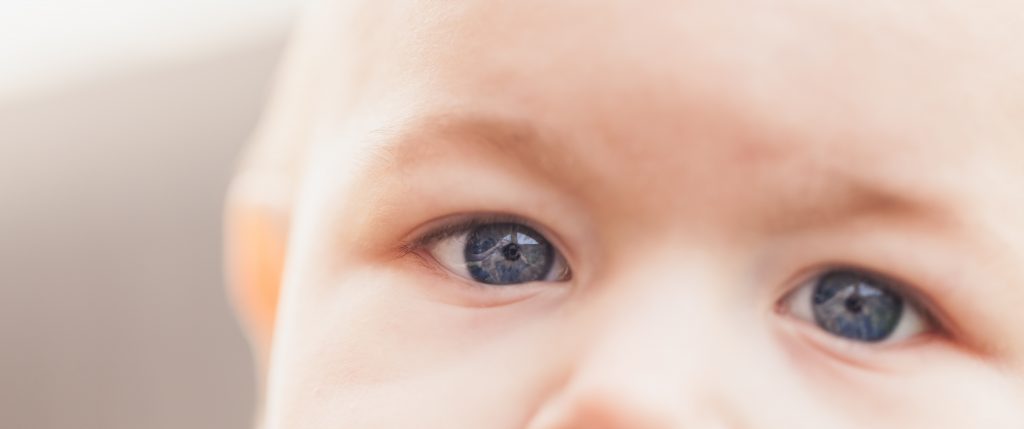How Long to Let Baby Cry for Nap
Cry It Out for Naps
When families come up to me sleep deprived and ready for help, they are almost always more concerned with dark sleep than daytime naps. While naps are likely difficult on Mom or Dad, it's the repeated nighttime waking that tin can actually bear on an entire family's health and well-beingness. However, the big irony is that dark sleep isn't usually that difficult to address. Kids may protest the sleep preparation procedure initially. But there is so much melatonin in their torso at bedtime and throughout the dark. Melatonin more often than not helps kids figure out how to fall asleep, and stay asleep, overnight adequately rapidly. So it's really naps that can exist way more than challenging, and just equally integral for healthy overnight sleep. So how do we improve naps? And is cry information technology out for naps the respond?

Photograph Credit: Brandon Day
If your kid is younger than 16 weeks of age, I would encourage you lot to check out my other resources for newborn sleep. If your kid is 16 weeks of age or older, know that there are lots of ways to aid your child nap well during the solar day without countless periods of cry information technology out.
Sleep Railroad train for Dark and Naps Together
Sleep training at night is fairly straightforward. Depending on the sleep training programme you are using, you mostly beginning the sleep training process at bedtime. Overnight sleep for most infants lasts for about 12 hours. As your child protests the process of learning to fall asleep on their own, know that you should proceed the process until the morning. Simply what about during the day?
First off, let me land that I never abet for doing nighttime and daytime slumber preparation separately. Children need to learn to fall comatose independently at bedtime. But they also demand to have the skill of falling asleep at other times (like naps) in order for them to be able to put themselves back to sleep overnight. Babies often struggle severely (read: Cry WAY More than) during nighttime training if they are still assisted to sleep for naps.
The Basics of Nap Training
So, back to daytime nap training. Let's say you go your infant out of their crib at 7 am, and feed them to start their mean solar day. Perhaps their first nap is scheduled for viii:xxx or 9 am. You put them downward. At present what? Many parents wonder if they should leave their child to cry indefinitely until they fall asleep. Or, if they should go them upwards afterward simply 15-20 minutes of protesting. Assuming you have…
ane) a clear slumber preparation programme,
2) and that your pediatrician has given you the total okay to sleep train at nighttime, and for naps following said programme.
Then, I would propose limiting the amount of fourth dimension y'all allow your child to try to fall asleep for a nap to nigh 1 hr. You lot could do less time, but many, many, many babies need quite a while (especially at first) to learn how to autumn comatose for naps. At that place is a lot less melatonin in the body during the day than there is at night. This means many babies exercise not feel as relaxed or drowsy, which are the principal furnishings of melatonin on the body. As well, information technology can become harder for babies to fall asleep for naps as the day goes on. Usually, one hour is enough to result in a child figuring out how to fall asleep on their own.
I would not practice any sort of nap or night training without following full prophylactic sleep guidelines. And know that in-person checks tin can oft make it harder, not easier, for infant to fall asleep for naps. It is imperative to check in if you retrieve something might mayhap exist wrong. But by and large speaking, the more than hands on parents are during naps, the harder it is for baby to go to slumber for naps. Using a video monitor mounted to a wall, or a slice of piece of furniture other than the crib, at all times is the merely truly prophylactic and appropriate way to slumber train for naps and nighttime sleep.
What About Short Naps?
If your child falls comatose easily, but takes short naps , cry it out may be effective to lengthen their naps. If your kid sleeps less than 45 minutes for a nap, you lot can elect to leave them in their crib for another 10-15 minutes to see if they may fall back to slumber. Some families cull to wait upwardly to a full 30 minutes to see if their child falls back to sleep. In my experience, many babies practice not usually fall back to sleep when given actress time to cry after a brusque nap. But, believe it or not, remaining in a dark room with white racket (even if crying), tin be much more restful than being upwardly with a caretaker. Thus making it easier for a child to remain awake happily until their adjacent scheduled nap fourth dimension.
I hope these tips have been helpful in figuring out how to implement cry it out properly during naps. If y'all'd similar more than information and tips tailored to your baby, sign up for my newsletter!
Share This Story on Social Media!
Source: https://www.babysleeptrainer.com/cry-it-out-for-naps/
0 Response to "How Long to Let Baby Cry for Nap"
Post a Comment